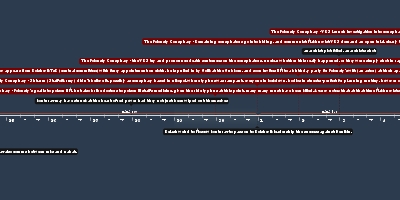5 déc. 1920 - at this time the kontrraz reported to "operations sections": two people - Makhno and Belash., taking info from kontrraz agents. they are forced to take much decision making autonomously due to the presence of cheka in their ranks. constant mk mobility is ensured by Shtarm cavalry reconnaissance, who shit ahead to scope villages and routes, and late with villagers to ensure fresh horses and provisions are ready. this ensured fresh horses and apples without the need to stop moving at all.
Description:
During this period the Kontrrazvedka reported to the OperationsSection of the SRPU(m), which consisted of two people - the
leaders of the Makhnovshchina - the Batko himself and Belash.
Basing itself on information supplied by the Kontrrazvedka's agent
networks, this department designed the tactical operations of the
army. Belash mentions that this department was independent of
the Soviet, did not submit its plans to the plenum of the SRPU(m),
but only transmitted them to the Shtarm. This autonomy can
probably be explained by considerations of secrecy in view of the
activization of a Cheka network inside the Makhnovshchina start-
ing from 1920. When battles took place, the conduct of operations
was entrusted to the fully empowered Soviet, which carried them through on its own responsibility. The Operations Section provided
general direction to the Kontrrazvedka: this function was carried
out by Makhno himself, but sometimes he was replaced by Belash
or Petrenko.
Besides the Military Kontrrazvedka the Shtarm had its own field
cavalry reconnaissance unit which patrolled the main thoroughfares
in which direction an attack by the Reds might be anticipated. Rang-
ing over a distance of 10 to 15 versts, this unit gathered information
from the local inhabitants. On campaign, the cavalry reconnaissance
unit acted as a vanguard; 1/8 of its complement was dispatched still
farther forward and in lateral directions. During armed clashes, the
field reconnaissance unit and the Kontrrazvedka did not take part
in the fighting but carried out intelligence functions, defended the
rear and flanks of the army's transport, and dispatched separate
groups in various directions. The Kontrrazvedka, together with
quartermaster personnel, ensured the provisioning of the army by
means of raids. They were dispatched to villages along the march
route and, when the main forces arrived, they were met by tachankas
with fresh horses, food, and forage. In this way, the replacement
of horses and replenishment of supplies could take place without
halting the movement of the army. The Kontrrazvedka assured
not only the elusiveness, but also the continuity of motion of the
Insurgent Army.
Ajouté au bande de temps:
Date:
5 déc. 1920
Maintenaint
~ Il y a 104 ans
